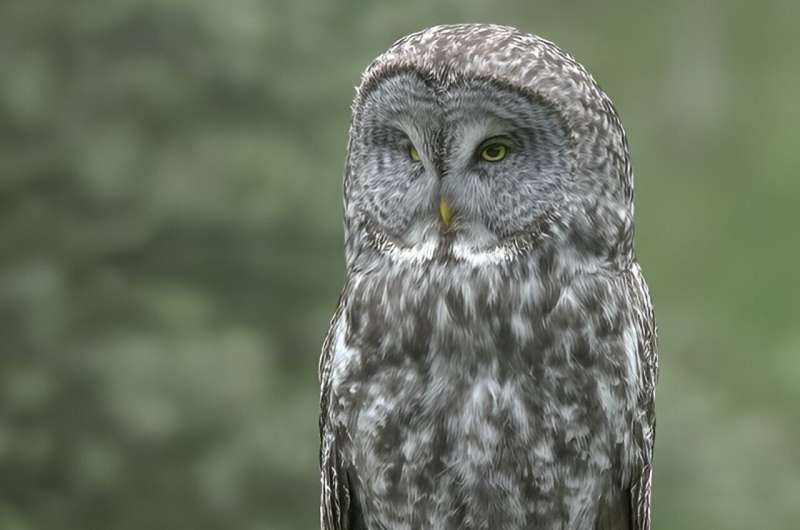This article has been reviewed according to Science X's editorial process and policies. Editors have highlighted the following attributes while ensuring the content's credibility:
fact-checked
peer-reviewed publication
trusted source
proofread
Machine learning provides a new picture of the great gray owl

The great gray owl has long been thought of as a sentinel of the Alaska wilderness, keeping watch over snow-laden forests as far north as the Brooks Range, well away from human populations.
In a study published last week with Scientific Reports, a team of University of Alaska Fairbanks researchers upends the notion that the iconic bird—known as the phantom of the North—lives far from cities, towns and other markers of human density.
"We like to think of our wildlife, especially in Alaska, as existing in pristine wilderness untouched by humans," said Falk Huettmann, professor of wildlife and ecology at the Institute of Arctic Biology. "Our computer modeling using open access data has shown that these owls actually congregate in much more populated areas near man-made structures."
A lack of scientific data has contributed to the myth that the birds are elusive and shrouded in mystery. Their Latin name, Strix nebulosa, plays upon an association with witchcraft. Strix means to utter shrill sounds, and nebulosa means misty or fog.
"This isn't the last word on species-habitat associations, but it does provide a much more holistic representation of where these owls live and in what kinds of environments," Huettmann said. "I think we are seeing that it's not scientifically accurate to hang onto these traditional narratives and myths that are perpetuated about wildlife."
The study was conducted using artificial intelligence modeling that was given over 100 predictors—environmental variables for specific locations such as days of freezing per year and distance to human footprints like cities, towns, runways, roads and even the trans-Alaska oil pipeline. Combined with citizen science-sourced, publicly available biodiversity databases, the modeling identified the most suitable habitats of the owl.
The unprecedented number of data inputs required equally large amounts of computing power, which was provided by an Oracle-based supercomputing platform.
The software used in the study could also be useful in modeling other animal populations, many of which remain unquantified or even unknown, Huettman said.
"This is the first time a computer modeling system has been used to do this specific kind of predicting because we simply lacked the computing power," said Huettmann, who also has an appointment in the College of Natural Science and Mathematics.
Huettmann and his team used the software Random Forest, a commonly used machine-learning algorithm, to make inferences from the predictors. The computer model was trained using data sets from the Global Biodiversity Information Facility, a digital network and data infrastructure based in Copenhagen, Denmark. Other data came from eBird.org, various local and national birdwatching email lists, iNaturalist.org and the Federal Aviation Administration's bird strike records.
Great grays are among the tallest owls. They live across central Alaska and Canada, as well as parts of the northwestern and central Lower 48. Outside North America, the owls live in Siberia, the Russian Far East, Lithuania, Kazakhstan, Mongolia, Manchuria and northeastern China.
More information: Falk Huettmann et al, A super SDM (species distribution model) 'in the cloud' for better habitat-association inference with a 'big data' application of the Great Gray Owl for Alaska, Scientific Reports (2024). DOI: 10.1038/s41598-024-57588-9
Journal information: Scientific Reports
Provided by University of Alaska Fairbanks





















